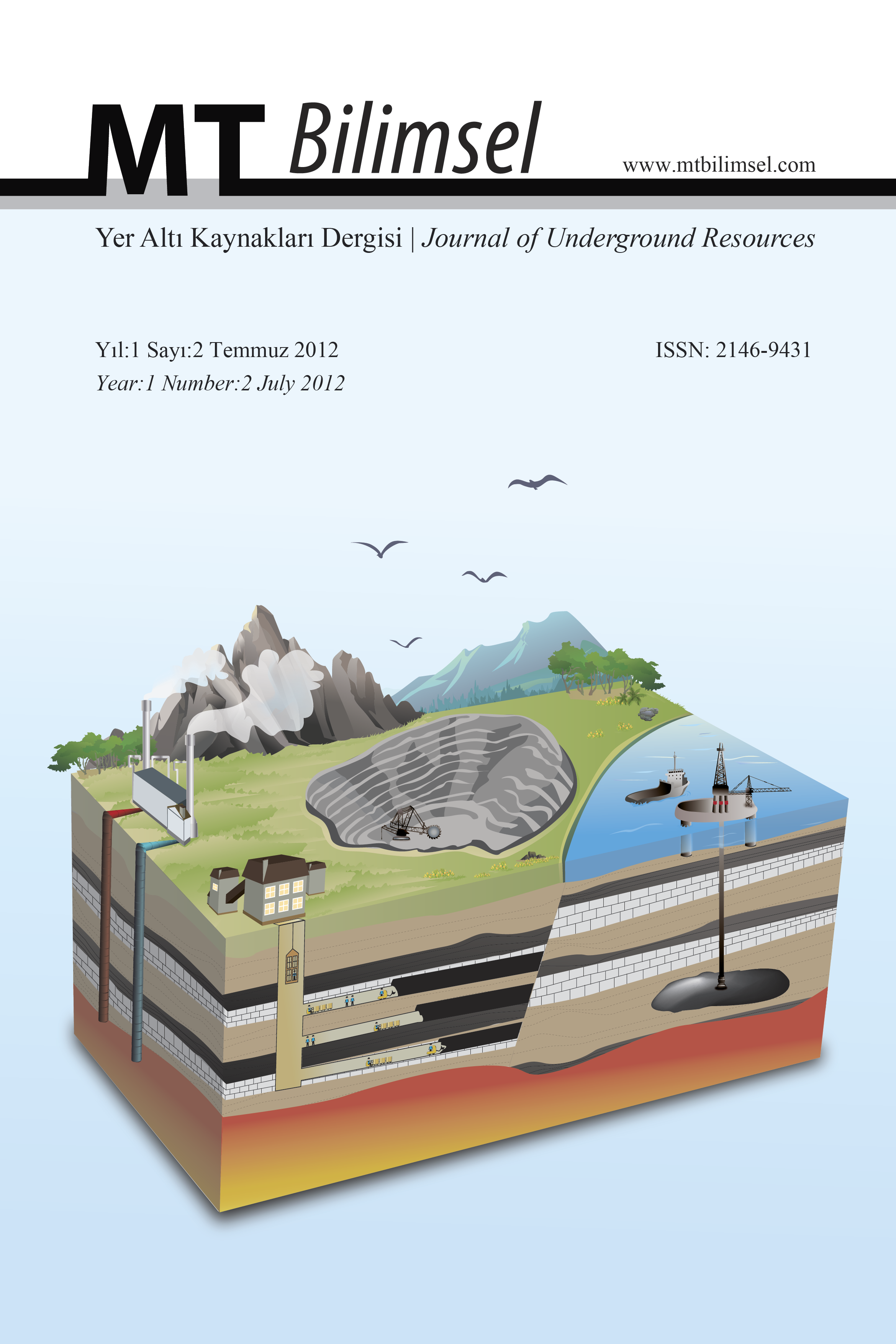Patlatma Hasar İndeksi Teorisinin Bir Uygulama Örneği: Yeraltı Ocağında Üretim Patlatması için Tasarım Ölçütleri
Çok sık olmamasına rağmen, kireçtaşı gibi üretimi etkileyen malzemeler yeraltı ocaklarındaki bazı durumlarda hem teknik hem de ekonomik uygunluk garanti edildiğinde bu çalışmanın amacı bu durumun bir parçasıdır. Ocak 1927’den bu yana faaliyettedir: şu anda, üretim yeraltında tamamen arakatlı dolgu yöntemi ile yapılmaktadır. Üretim faaliyetleri 4 odalı üst kat ve 9 odalı alt kat olarak iki seviyeyi içermektedir. İstenilen tane boyut dağılımına uygun üretim için patlama başına 650-800 kg patlayıcı madde kullanılması gereklidir. Zamanlama sistemine bakmadan, arzu edilmeyen etkilerinden dolayı titreşimler dikkate alınmalıdır. Bundan dolayı, titreşimler, dikkatli bir patlatma paterni tasarımı ve patlayıcının uygun performansı analiz edilerek azaltılmalıdır. Bu amaç için, gecikme başına şarj, kaya kütlesi içerisindeki p dalgalarının yayılım hızı ve en yüksek parçacık hızı arasındaki korelasyanların yardımıyla Patlatma Hasar İndeksi (PHİ) kullanılmıştır, en kısa mesafe / izin verilen gecikme başı en büyük şarj çiftinin belirlenmesi mümkün olmuştur
Design Criteria for Production Blasting in an Underground Quarry: An Example of Application of the BDI Theory
Although not common, there are cases of underground quarries where the exploitation affects materials like limestone, when both technical and economic feasibility are guaranteed; the object of the present study is part of this case. The quarry is in operation since 1927: at present, the exploitation is carried out completely underground by sub-level stoping. The exploitation involves two levels, with 4 rooms at the upper level, and 9 rooms at the lower level. The need to comply with the required production respecting the desired grain size distribution implies the adoption of 650-800 kg of explosives per blast. The vibrations, as well as the related unwanted effects, are then considerable, regardless of the timing system. The vibrations must therefore be reduced, through the analysis of the blasting pattern, a careful design and a proper performance of the blast. For this purpose, the theory of Blast Damage Index (BDI) was used: through the development of correlations between charge per delay, propagation velocity of p waves in the rock mass and peak particle velocity, it was possible to determine which pair minimum distance/maximum charge per delay is allowed
